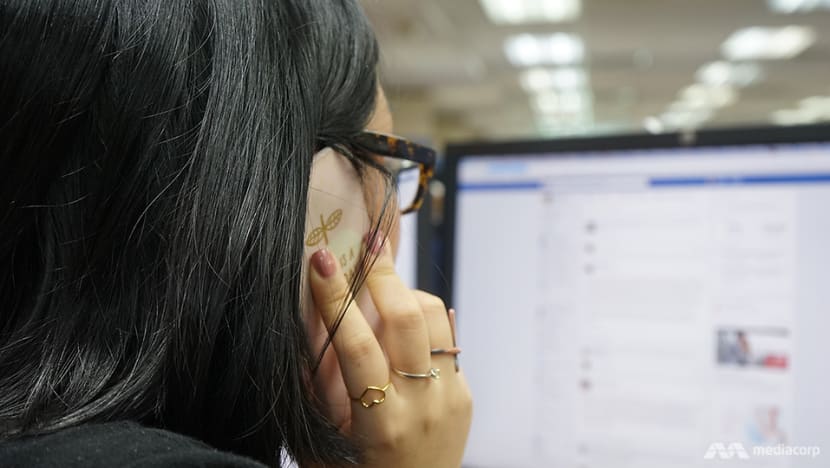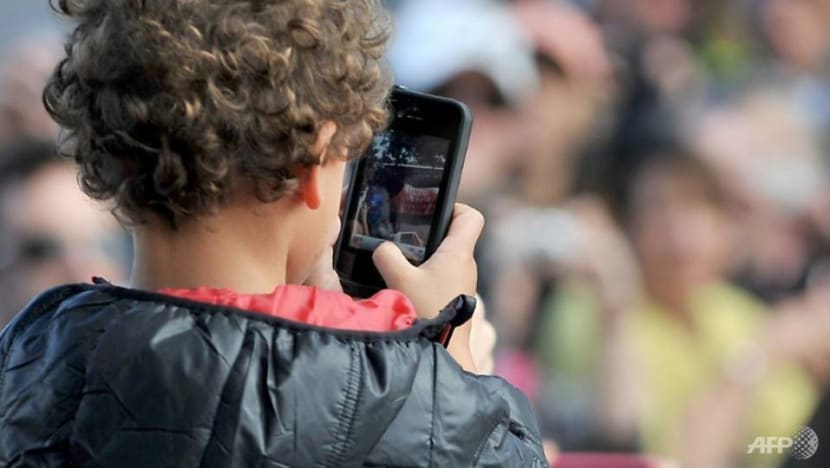In a world going wireless, is radiation from mobile and other devices a growing danger?
As more people buy anti-radiation products as shields against electronic devices like phones and Wi-Fi routers, the programme Talking Point finds answers to seven must-ask questions about how exposed we really are.

SINGAPORE: Bluetooth headphones, laptops, smart televisions and watches, tablets and Wi-Fi routers — many of us have these at home and also carry a mobile phone all the time.
How many people, though, wonder how exposed they and their families could be to radiation emitted by these devices?
Many more than before, according to several retailers in Singapore that say sales of anti-radiation products have quadrupled over the past five years.
There are a variety of these products, from stickers selling for S$2 to products that are claimed to protect the vulnerable — children and pregnant women — like beanies for babies and maternity belly wraps.
But how protective are they? And is there a need to be worried about the radiofrequency electromagnetic fields (RF-EMF) emitted by wireless devices? The programme Talking Point investigates.
1. WHAT EXACTLY IS RF-EMF?
Mobile phones and electronic devices use radiofrequency to function, for example to transmit data. Their signals operate in the lower end of the electromagnetic spectrum. At the higher end are energy fields such as x-rays and gamma rays.
“(Radio frequencies) have the ability to, let’s say, heat up the body, for example if that particular device is held close to the body, which in this case is a cell phone,” noted Neelakantam Venkatarayalu, an associate professor from the Singapore Institute of Technology’s (SIT’s) engineering cluster.
2. WHAT ARE THE RISKS?
In 2011, the World Health Organisation’s (WHO’s) International Agency for Research on Cancer classified RF as “possibly carcinogenic to humans”, based on a few studies that found an association with a type of brain cancer.
This means “there could be some risk” of cancer, with continued evaluations needed even now.
3. ARE THERE GUIDELINES?
When it comes to mobile phones, before they can be put on the market, they must be designed and tested to operate below international reference levels for a measurement called the specific absorption rate.
This measures the amount of RF energy absorbed by the body per mass of tissue. Or as Venkatarayalu put it, “that translates directly into the amount of heat that builds up over time” when using the phone.
Typically, the regulatory exposure limit for the head and torso is two watts per kilogramme (W/kg). In some countries, like the United States and Canada, it is 1.6 W/kg.
Users might not realise it, but mobile phones contain a section on safety: Go to Settings > About phone > Legal information. It includes information on the phone model’s specific absorption rate, either on the page or via a link.
4. WHAT DO TESTS SHOW?
Talking Point sent five popular phone models for laboratory tests to find out how much radiation they emit when receiving a call.
The results showed that the phones’ power densities were below the exposure limit guideline by at least 200 times.
“All of them are within the … safety limit, so it shouldn’t be a concern,” said Pei Yiyang, an associate professor from the SIT’s infocomm technology cluster who took the measurements.
As it is not just mobile devices that emit an electromagnetic field, RF expert Venkatarayalu used an instrument called a spectrum analyser to also take readings of different frequencies around programme host Steven Chia’s house.
The readings were below the safety guideline by at least 100 times. Even the Wi-Fi signals from Chia’s router were lower by a factor of about 1,400. And that was a “conservative estimate”.
“We’re (measuring) a maximum value,” said Venkatarayalu. “It needn’t be emitting that all the time — it could be just a pulse that appears and vanishes.”
5. DO GUIDELINES NEED UPDATING?
One professor who thinks the current exposure limits are not conservative enough, however, is Devra Lee Davis, the founder of advocacy group Environmental Health Trust based in Wyoming, US.
“The limits that we have now … aren’t protective of human health,” she said. “The latest evidence indicates that cell phone and wireless radiation is a human carcinogen.”
One of the studies she specified was published last year in the International Journal of Environmental Research and Public Health.
It found that being on the phone for 17 minutes or more a day for 10 years — or about 1,000 hours of lifetime use — increases the risk of developing a brain tumour.

Davis wants the exposure limits to be reviewed. For example, the guideline for whole-body exposure level adopted by the WHO and many countries is 10 watts per square metre.
She did not, however, go into the specifics of what would be more accurate limits. What she thinks is “essential” as the first step is that the radiation information should come “right on the phone”, as some countries have legislated.
In France, for instance, mobile phones come with radiation labelling on the package and a recommendation that the device should be kept away from the stomachs of pregnant women, among other precautions.
The country also bans mobile phone advertising aimed at children under 14 years old, as does Belgium for younger children.

6. DO ANTI-RADIATION DEVICES HELP?
Some people may also want to play it safe, which is why they buy products such as S$68 anti-radiation bracelets.
Talking Point contacted retailers to find out the best-selling items, and with Pei’s help, tested their effectiveness in blocking the signals sent by a transmitter to a receiver.
The sticker, the bracelet, the maternity belly wrap and a stone said to absorb radiation all did not affect the signal quality, which showed that they were “not effective”, she said.
But the anti-radiation beanie, which cost $20, had some effect because the signal power dropped.
“As we can see from the label of this baby cap … there’s some metallic material that reflected the signal,” noted Pei, likening it to the way a metal plate acts as a shield against radiation.
“This is the extra precaution that you can have to further reduce the RF radiation.”
7. WHAT ELSE CAN YOU DO, OR SHOULD NOT DO?
Davis said her group has been working to get parents, schools and teachers to understand that “tablets belong on tables” and should, ideally, be wired.
“You can wire your connections to most of these things. And (the routers) don’t need to be on 24/7,” she said.
She thinks mobile phones also “shouldn’t be used much by children”, whom she cited as a vulnerable group along with the elderly, those with pre-existing morbidities and immunocompromised individuals.
“A child’s head has a thinner skull (than an adult’s). A child’s skull can absorb 10 times more radiation,” she added.
I’ve seen so many toddlers … with phones in their mouths, with phones held close to bodies. And that’s just inappropriate.”
The key factor in radiation protection is distance, noted Venkatarayalu. “As we move away from a signal source, the signal strength is going to get … much weaker,” he said, demonstrating this with a transmitter he set up.
At 50 centimetres away, its power density hovered around 100 microwatts per square metre. At a metre away — double the initial distance — the reading decreased by a factor of four.
When a phone is in idle mode in one’s pocket, that is a “very low” power mode; and when it is transmitting a call, the power level, though higher, remains below the safety guidelines, Venkatarayalu said.
Even if a phone gets warm during a call, that is “not necessarily due to RF radiation” as the battery also emits heat, and there can be other factors too.
RF, by its nature, also does not have “so much energy to cause any damage to the cells”, he added.
WATCH: Is radiation from our devices dangerous? (22:11)
But for people who are still concerned about radiation, he and his university colleague Pei suggest using a hands-free kit or speaker mode to keep the phone further away.
“They can reduce the amount of time they (spend) using their phone. Maybe shut it off at night,” Pei added. “All these are simple measures that can reduce RF exposure.”
Watch this episode of Talking Point here. The programme airs on Channel 5 every Thursday at 9.30pm.















